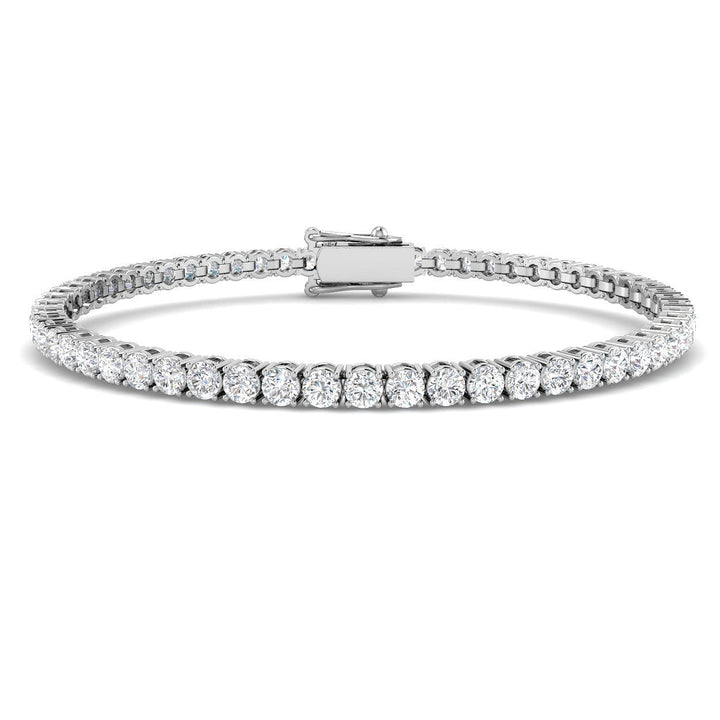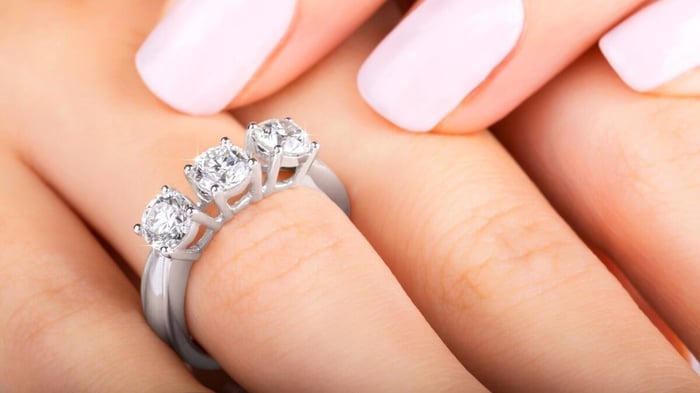What Is Light Performance When It Comes To Diamond Jewellery?
Diamond jewellery is an investment, and we know people want to look good when spending money on their new diamond jewellery. The light performance of a diamond has a huge impact on the beauty of a piece of jewellery.
At the heart of the diamond industry lies a trade-off between the light performance and the cost of a diamond. Generally, the better the light performance, the better and more expensive the diamond.
When it comes to diamond jewellery, light performance is one of the most important qualities defining the appearance and beauty of a diamond.
The term diamond light performance describes how a cut and polished diamond will reflect and bend light.
What Is Good Light Performance?
A diamond is defined by its many unique properties. But what is light performance when it comes to diamond jewellery? It's actually quite simple. A high light performance diamond is one that has a high light transmission of between 75% and 95%. These diamonds are also of the highest quality and usually have larger, more perfect crystals than lower-quality gems.
The capacity of diamond jewellery to take in light and reflect it back to the observer's eyes is the defining characteristic that sets diamonds apart from other types of gemstone and contributes to their high level of desirability in jewellery. These light shows have never failed to hypnotise human beings, despite the passage of millennia. In this article, we take a quick look at light performance and how it relates to fine diamond jewellery.
Light performance is a term used in the jewellery business to describe how well a diamond stone reflects light back to the observer. These aspects of light are referred to as brightness, fire, and scintillation, and they are discussed in light performance. If you compare a diamond's light performance to that of other valuable stones, you may determine how high-quality the diamond is. At the same time, not all jewellery diamonds are equal – some diamonds are most definitely better than others!
Light Performance – A Big Idea And A Brief Introduction!
Light performance in diamond jewellery has been the subject of many recent papers and articles on the Internet. In this article, we briefly introduce the physics of light in a diamond and what we know about its behaviour as it passes through a piece of jewellery. This article presents the three dimensions of diamond light performance: Brilliance, scintillation and fire.
Diamond Brilliance
Our perception of the diamond's brightness is referred to as its brilliance. In most cases, brilliance is not simply the direct reflection of light from the stone's surface facets back into the eyes of the observer. Brilliance is more complex than that.
The scintillation, the availability of light sources, and the contrasts are all aspects of brilliance, yet, these aspects are not the only ones. The ever-shifting factors that come with an imperfect human perception would fall under this category.
Some people believe a diamond's brilliance is the essential factor in determining its overall attractiveness. This is because when a diamond's brilliance is diminished, its fire and scintillation are also reduced, albeit to a lesser degree.
Setting a steep diamond should be done so that light may enter the stone's pavilion and then be reflected back out to the table, which is the facet at the top of the gemstone. The phenomenon known as "leakages" occurs when a "window effect" is generated in a diamond, making it appear like the stone is made of transparent glass.
Diamond Scintillation
In the past, the concept of scintillation was thought of as alternating flashes of contrasting dark and brilliant colours created by facets. These flashes were considered to be triggered by the movement of the spectator, the diamond, or the source of illumination.
Some experts believe that defining and measuring scintillation cannot be accurately done since observations are always subject to the observer's interpretation. This means that scintillation is a largely subjective phenomenon but still very real.
By evolution, the human eye is designed to pick up on flashes of light or sparkles; they attract our attention. As a result, some experts understand scintillation as the brilliant white or fiery, multicoloured sparkle that appears brighter than other light that catches the human eye. This effect may be related to our perception of the dangers of fire or the flashes from metallic objects such as weapons.
One expert defines two kinds of scintillation. Static scintillation is "the amount and the placement of darkness in a diamond seen … [face-up view] in a jewellery store environment from a distance of 16 inches." Dynamic scintillation "is the sparkle effect [one sees] when [any one of the] diamond, the light or the observer moves."
In general, scintillation refers to the overall effect of moving a diamond, the light source, or the viewer. This movement can cause little flashes of light to be seen. Consequently, a diamond is said to have excellent light performance if cut and polished to such a degree that it displays a high amount of this characteristic.
It is widely believed that diamonds with more facets have more scintillation. (Strangely, some consumers prefer the bolder, blockier scintillation of the Old Mine cuts.)
Diamond Fire
The capacity of a diamond to split white light into its component hues gives diamonds their fabled "fire." Fire is the spectrum of hues formed when the diamond acts like an expensive prism and disperses the light back into its component colours. These bursts of colour are more intense and appealing, given their strength and variety.
How To See Your Diamond's Light Performance
The finest places to observe brilliance are those with ample lighting, and a location with point lighting gives the impression that fire is more prevalent there. For example, a bright sunny day is ideal for appreciating brilliance outdoors, and a typical jeweller's shop with specialised display lighting will maximise fire! However, it is impossible to see both the greatest brightness and the maximum fire at the same moment, from the same vantage point, or in the same location.
Moving the diamond under the light allows you to see scintillation at its best under a bright point light source. As the diamond moves under the light, the facets will reflect light into your eyes, displaying the sparkle of the diamond to the best effect.
The Beauty Of A Diamond
Whatever it is about diamonds that draws you to jewellery made with them – their brightness, scintillation, or fire – the fact remains that you are one of the many men and women who have succumbed to the hypnotic allure of an attractive-looking stone. Now you know the basics about the light performance of diamonds, you will have some insight into what makes a diamond so beautiful and what to look out for when you make your final choice about your purchase.
Classic Diamond Tennis Bracelet 5.00ct G/SI in 18k White Gold

£4,797.00
£8,637.00
A classic tennis bracelet in bright 18k white gold with five carats of G/SI graded diamonds gives a fun and fresh look. A sophisticated, handcrafted piece from our UK artisans will bring smiles to the wearer and those who see… read more
Light performance is just one of the many factors that determine the overall beauty of your diamond jewellery. The design of the setting, the precious metal used as well as the size of the diamond, the colour grade, clarity and cut quality all play a part. The best way to know if a piece of diamond jewellery is right for you is to see it, hold it and wear it. That's why at All Diamond, you can examine any item of jewellery at home for up to 30 days. If you are not delighted with your purchase, you can return and exchange it to ensure that you have the perfect piece of jewellery for your needs and tastes. Each piece of jewellery we offer is designed and handcrafted right here in the UK, and we stand behind our artisans' skills with a lifetime workmanship guarantee!
Please take a moment to browse our collections of fine diamond jewellery. We are confident that you will be inspired by the beautiful jewellery carefully photographed to enable you to see the most delicate details of each piece!




